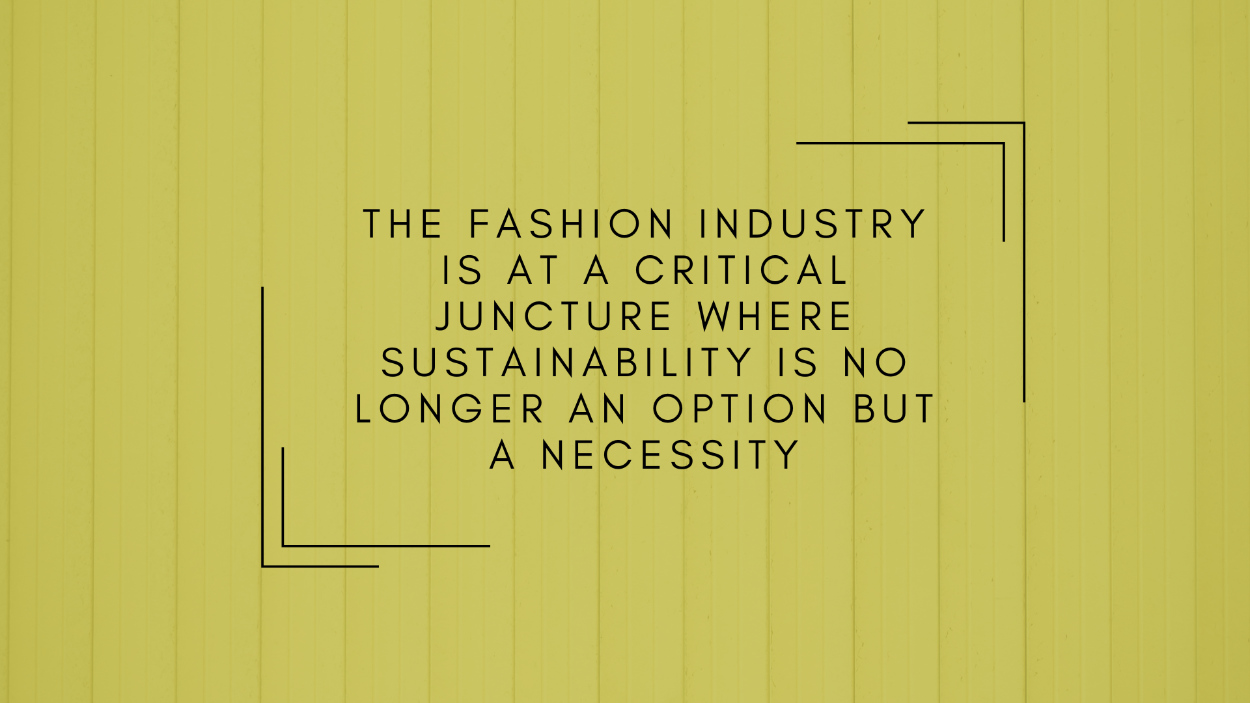Key Takeaways:
- The evolving world of sustainability legislation – with examples such as CSRD requirements and Extended Producer Responsibility (EPR) schemes – presents a moving target for fashion brands.
- Advancements in climate technology are likely to be critical to achieving fashion’s sustainability goals – both externally mandated and internally-set – in a way that can be substantiated.
- Shortlisting climate tech requires both a thorough knowledge of regulatory requirements and targets, as well as a frank evaluation of potential partners’ expertise, scalability, reliability – and technology partners’ own ability to evolve to meet changing targets.
The climate challenge is stark and without the incredible tech advances we are seeing happening right now, it will be difficult to achieve the goals set out for the fashion industry in time. In the apparel industry’s pursuit of compliance, climate tech has emerged as a game-changer.
Climate tech refers to the technology solutions that help mitigate and adapt to climate change by enhancing sustainability across various industries. In the context of fashion, it encompasses innovations that promote sustainable sourcing, production, distribution, and waste management, plus importantly, supports reporting on these areas.
Sustainability legislation is ever-evolving. For example, with the approaching CSRD requirements, brands need to report on much more than just carbon footprint; full-scale biodiversity must now be included too. New proposals such as the Extended Producer Responsibility (EPR) schemes and the Ecodesign for Sustainable Products Regulation (ESPR) proposal, alongside all the reporting required for the upcoming Digital Product Passports and more, need to be taken into account when planning what tools a company may need to support them. Keeping on top of legislation is challenging and it’s a complex process. We, therefore, anticipate seeing more brands looking to the latest climate tech to help them meet core requirements in time. With this in mind, 2024 is set to be the year of the tech evolution for the fashion industry.

However, the challenge for brands is to choose the right tech partners amidst the multitude of new technologies and offers coming onto the market. Some tech brands claim to do one thing, while others claim to do everything, making it difficult to determine where to start. The key is to understand what your brand really needs based on current, as well as upcoming legislation, and this is where most companies can do with some expert advice.
As Sustainability and Compliance Director at Trimco Group, I have been working with various sustainability committees and DPP working groups in Europe over the past few years. As part of this, I have been keeping a close eye on how climate tech has been evolving. Before you even start talking to potential tech partners, I suggest pinning these four key points down first:
- Know which regulations your brand(s) fall under and thus are required to report on. In the case of CSRD the most extensive reporting requirements we have seen – it is key to perform your DMA (double materiality analysis) to determine what you are required to report on under the CSRD specifically.
- Know your ESG target so that you know what you wantto report on
- Know what data you have available, so that you know how much climate tech you need to support you
- And budget… really important. Be clear about how much you can invest, so that you get the best value out of your climate-tech

Sounds simple, right? Maybe, but the trouble is that we are still in a process of evolution and with legislation constantly being updated and with new challenges coming our way almost daily, it’s hard for those in the fashion industry to stay on top of what is needed. That’s why it is so incredibly important to choose the right working partners from the very start, or you stand to lose a lot of time and budget on having to change again. In my experience, it is helpful to keep the following factors in mind when seeking out a system that aligns with your company’s sustainability goals and operational needs:
Made-to-measure: One size does not fit all! Different brands have different needs. Choose a technology that can be customised to meet your specific needs. A good tech partner should be willing and able to tailor-make a package for you.
Compatibility: Ensure that the climate tech solution you choose is compatible with your existing technology infrastructure. Integration should be smooth and efficient.
Flexibility: Can the solution scale with your brand’s growth or adapt to changing needs? The dynamic nature of the industry requires adaptability and room for change.
Reliability and evolution: Select climate tech providers with a proven track record for delivering reliable and effective solutions, that are constantly evolving their offer to stay up to date on the latest legislation and requirements. This is crucial! If they are out of date, so are you.
Expertise: No single system can meet all our needs, so when choosing service providers, it’s vital to look for those who have established networks of partnerships and can offer a range of expertise and solutions, all in one place. For instance, at the Trimco Group, we recently partnered with Green Score Capital, a French SaaS company whose solution reports specifically on the direction given by the EU CSRD, and the market demand for carbon footprint by product. Trimco Group’s ProductDNA® offering is a comprehensive tool for monitoring, reporting and assessment of supply chain social and environmental compliance.

Conclusion
The fashion industry is at a critical juncture where sustainability is no longer an option but a necessity. Climate tech paves the way towards hope for the future, enabling fashion brands to reduce their environmental impact, meet consumer demands, and strengthen their brand image, while doing the right thing. By selecting the climate tech solutions that best fit their goals and compliance requirements, apparel brands can ensure a responsible transition in 2024 and beyond.
